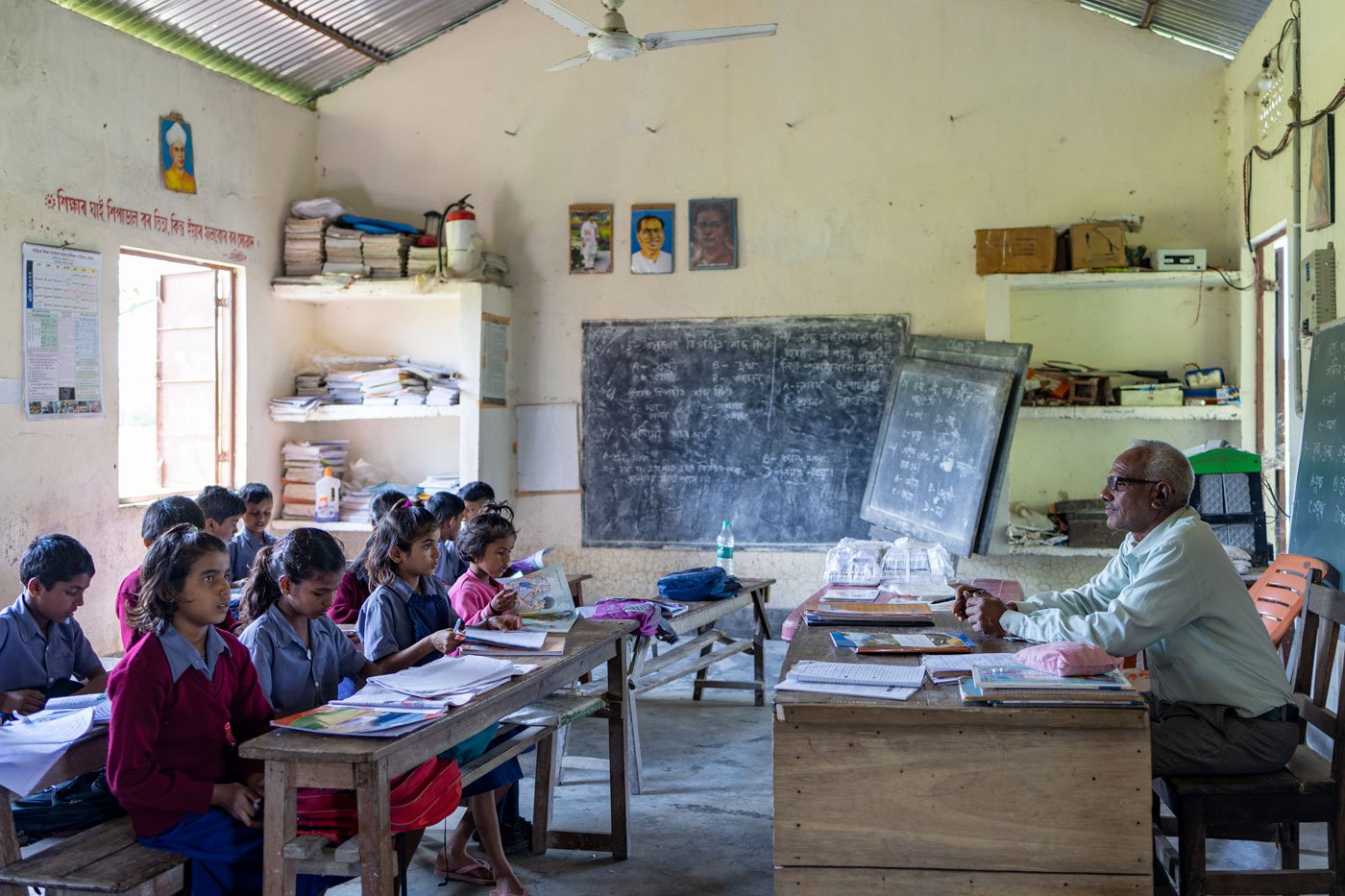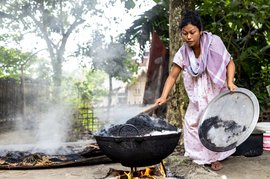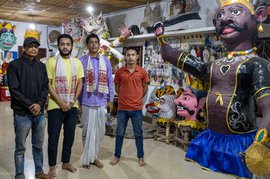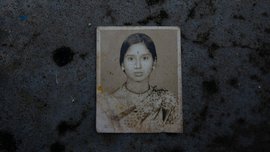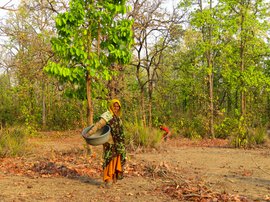“To get them to even come to school is a challenge.”
Headmaster Siwjee Singh Yadav’s words carry the weight of his 34 years of experience. Yadav, or ‘masterji’ as his students call him, runs the only school on Dabli Chapori. Most of the children of the 63 families that inhabit this island in the Brahmaputra river, in Assam’s Majuli district, attend this school.
Seated at his desk in the only classroom of Dhonekhana Lower Primary School, Siwjee looks around him, smiling at his students. Forty-one bright faces – all 6 to 12 year olds and students of Classes 1-5 – stare back at him. “Teaching, imparting education to the small ones – that is the real challenge,” he says, and adds, “They would rather run away!”
Before gathering pace on reviewing the Indian education system, he pauses and calls out to some of the older students. He instructs them to open a packet of story books in Assamese and English sent by the state government’s Directorate of Elementary Education. He knows that the excitement of new books will keep his pupils busy and allow him to talk to us.
“What the government pays a college professor they should pay a primary school teacher; we are the ones who set the foundation,” he says, emphasising the importance of elementary education. But, he says, parents don’t take primary schooling seriously believing that only high school matters – a misconception he works hard to correct.
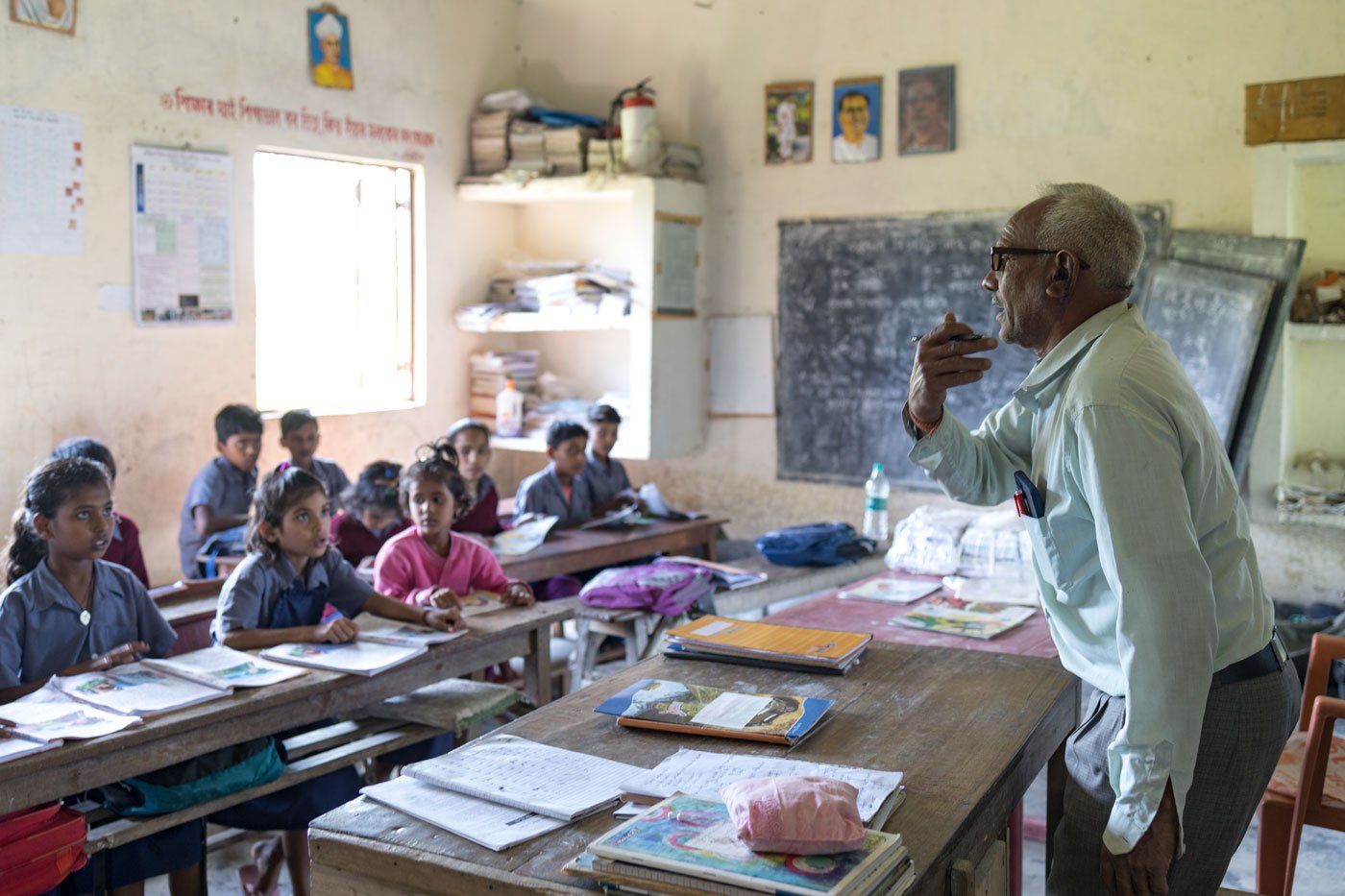
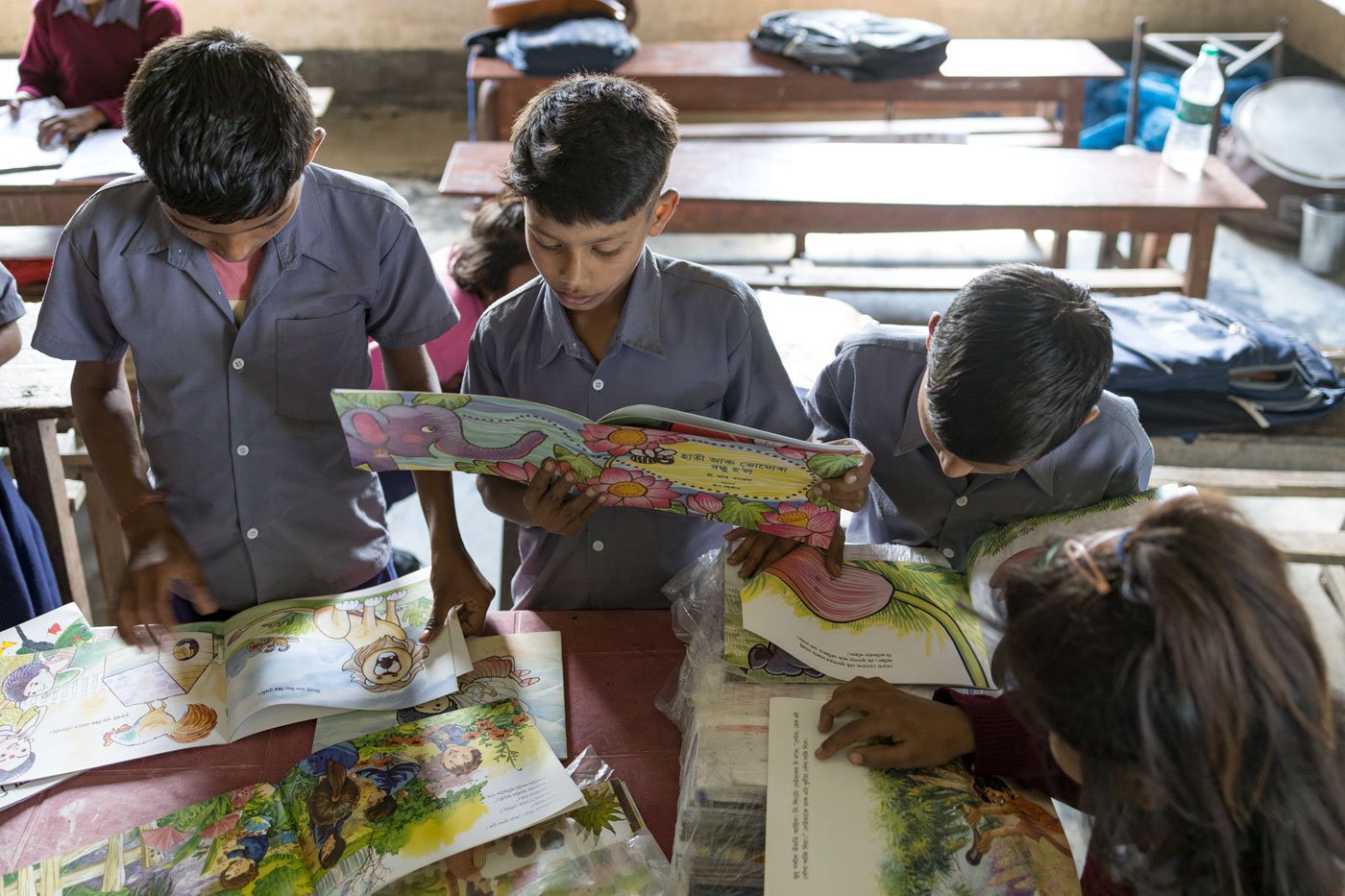
Left: Siwjee Singh Yadav taking a lesson in the only classroom of Dhonekhana Lower Primary School, Dabli Chapori. Right: S tudents of the school with the story books sent by the education directorate
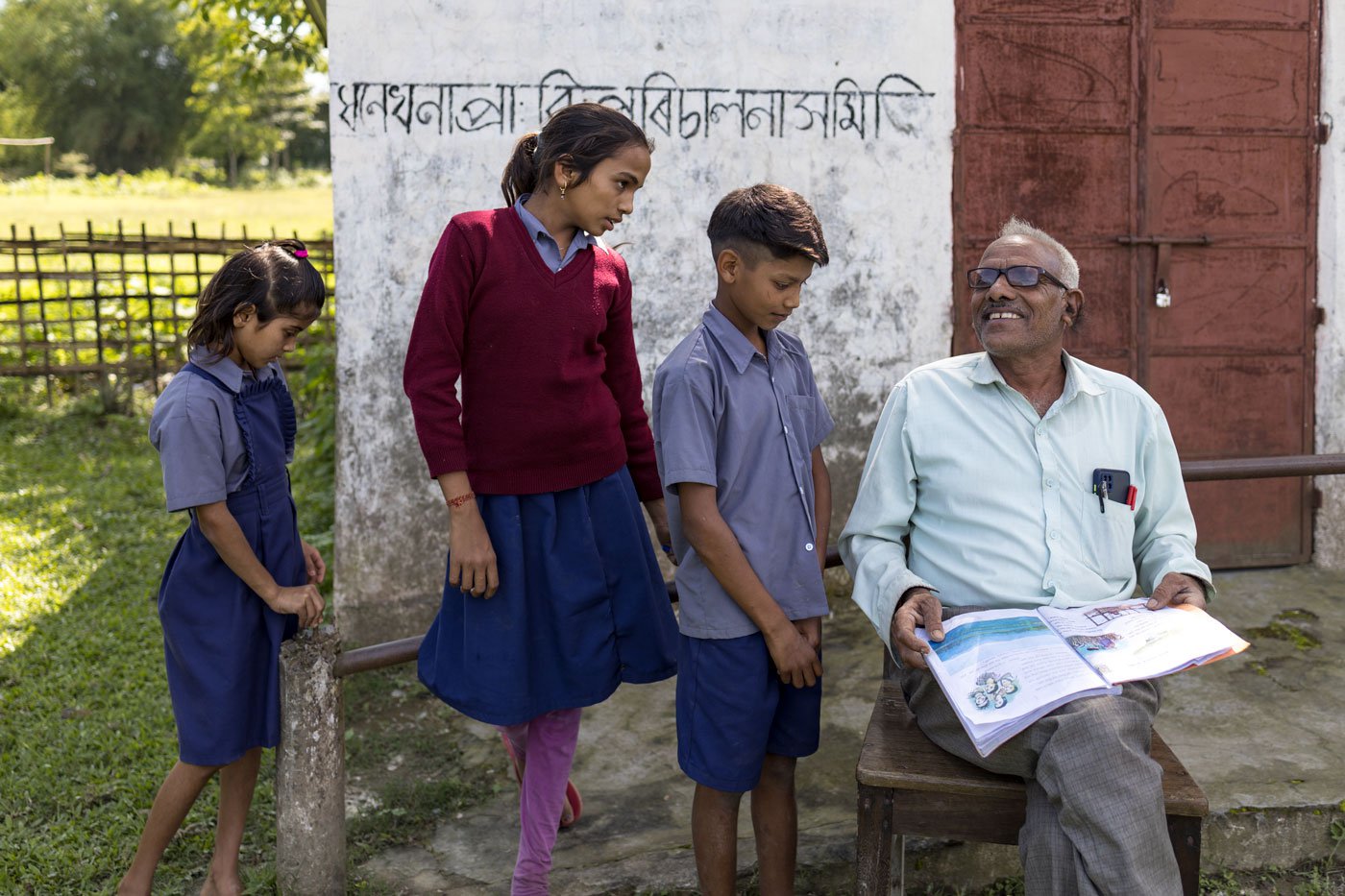
Siwjee (seated on the chair) with his students Gita Devi, Srirekha Yadav and Rajeev Yadav
(left to right) on the school premises
Home to about 350 people, Dabli Chapori NC is a sandbank island, which Siwajee estimates is roughly 400 square kilometres in area. The chapori is classified as a non-cadastral area. That is, the land here hasn’t been surveyed yet. It came under Jorhat district earlier, before the new Majuli district was carved out of northern Jorhat in 2016.
If there were no school on the island, its 6-12 year olds would need to spend over an hour to reach one on the mainland – in Disangmukh, close to Sivasagar town. They would need to cycle about 20 minutes to get to the island’s jetty, from where it would take them 50 minutes to cross the river by boat.
All homes on the sandbank lie within a radius of 2-3 kilometres from the school – which proved to be a blessing when the school was shut due to the Covid-19 pandemic in 2020-21. The students of Siwjee’s school were able to continue their education because he went door to door, meeting them and checking on them. The other teacher appointed to the school resides in Gaurisagar (in Sivasagar district), about 30 kilometres away from the riverbank across. “I saw each child at least twice a week, and gave them homework and reviewed their work,” Siwjee says.
But even so, he feels there was a loss in learning due to the lockdown. He is unhappy with the official policy of sending students up to the next class, regardless of whether they are ready. And so, he wrote to officials of the education directorate. “I told them to forgive the year, and that the children would benefit if they stayed back [in the same class].”
*****
A large colourful map of Assam is tacked on the outer wall of Dhonekhana Lower Primary School. Drawing our attention to it, headmaster Siwjee places a finger on an island marked in Brahmaputra river. “Look at where the map is showing our chapori [sandbank] and where it is actually located? he says, laughing. “There is no relation!”
The cartographic mismatch galls Siwjee even more because he studied Geography for his bachelor’s degree.
Born and raised on chaporis and chars , sandbanks and islands in the Brahmaputra that keep moving, Siwjee knows better than anyone else that living on shifting ground could call for a frequent change of address.
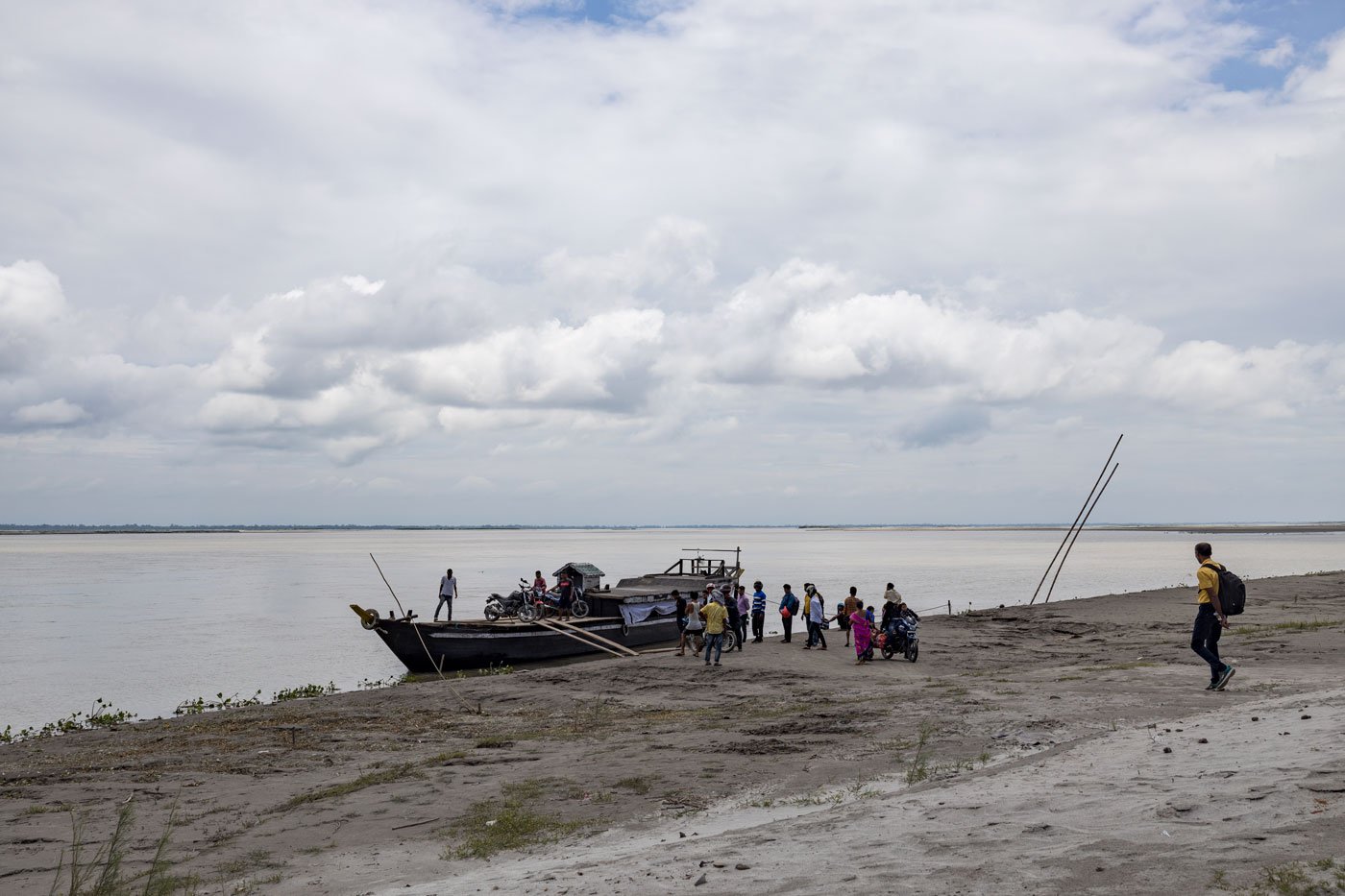
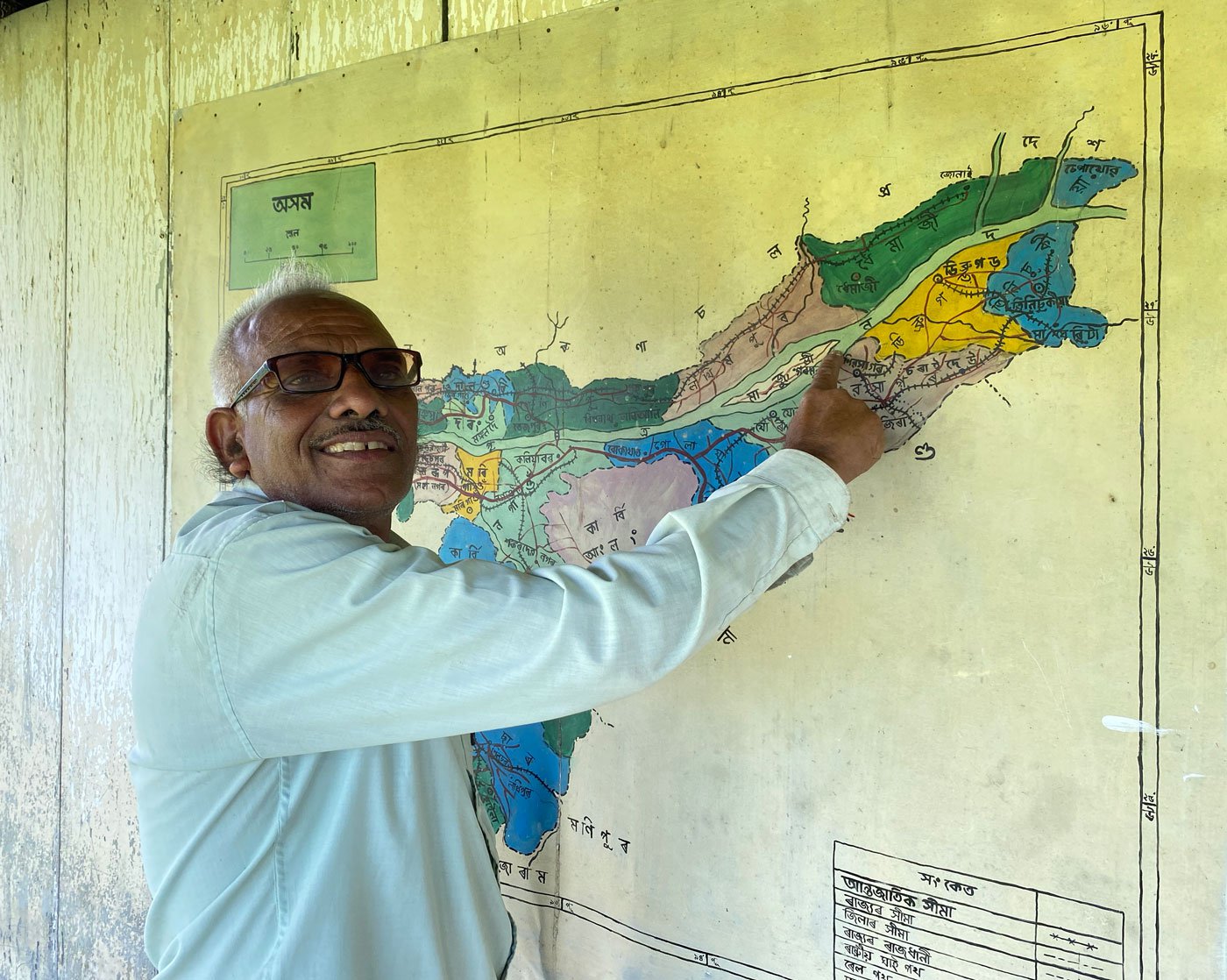
Left: A boat from the mainland preparing to set off for Dabli Chapori. (Right) Headmaster Siwjee pointing out where the sandbank island is marked on the map of Assam
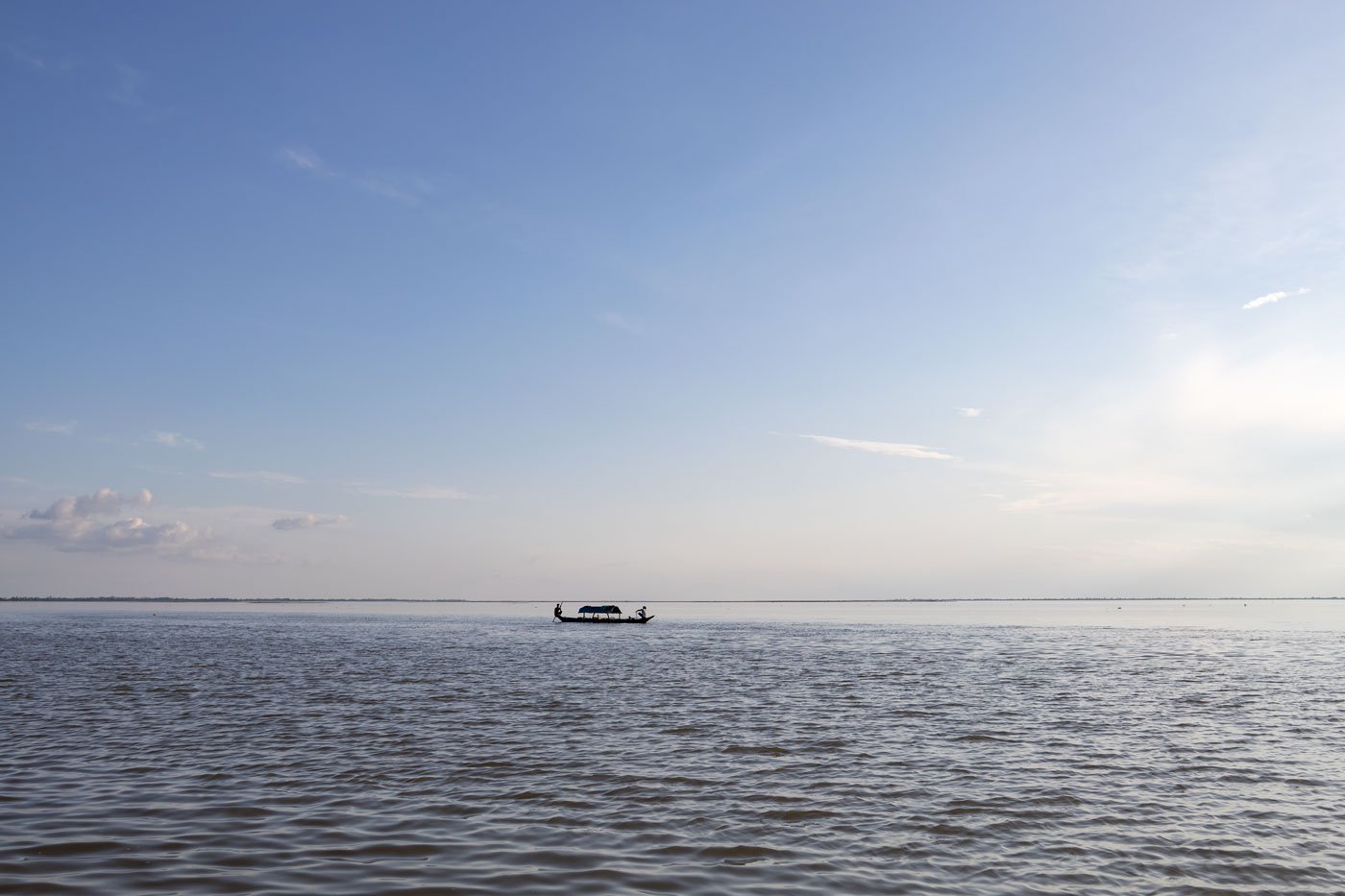
The Brahmaputra riverine system, one of the largest in the world, has a catchment area of 194,413 square kilometres in India
“When it rains a lot, we start anticipating a flood with strong currents. Then people move their valuables and animals to a higher place on the island where the water won’t reach,” says Siwjee, explaining the annual drill. “There is no question of holding school until the water recedes,” he adds.
Map making can’t quite keep track of the sandbank islands that are formed and re-formed, and which disappear and appear in the 194,413 square kilometre area occupied by the Brahmaputra basin in India.
All the homes on the Dabli sandbank are built on stilts since flooding is a regular occurrence in the Brahmaputra – one of the largest riverine systems in the world – especially in the summer-monsoon months. The period coincides with the melting of Himalayan glacial snow, which feeds the rivers that empty into the river basin. And the area around Majuli gets an average annual rainfall of 1,870 centimetres; nearly 64 per cent of it is received during southwest monsoon (June-September).
The families settled on this
chapori
belong to the Yadav community from Uttar Pradesh. They trace its origins to Ghazipur district, arriving on the Brahmaputra islands in 1932. They were looking for fertile, unoccupied land and found it thousands of kilometres east on these sandbanks in the Brahmaputra. “We are traditionally cattle rearers and our ancestors came looking for grazing grounds,” says Siwjee.
“My paternal grandparents first landed on Lakhi Chapori with 15-20 families,” says Siwjee. He was born on Dhanu Khana Chapori, to where the Yadav families had moved in 1960. “It still exists,” he says, “ but nobody lives in Dhanu Khana now.” He remembers how their homes and belongings would often go under water during the floods.

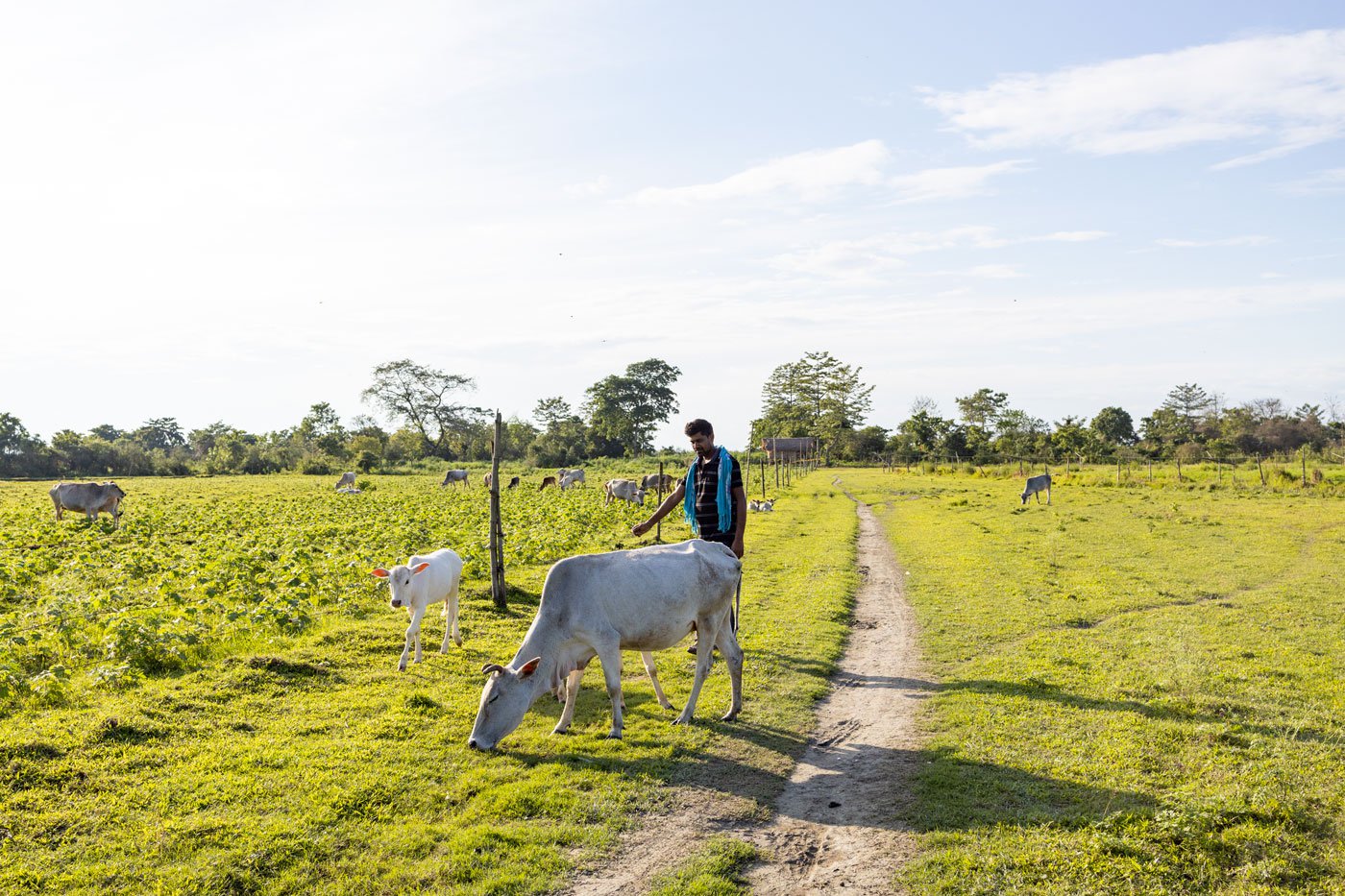
Left: Siwjee outside his home in Dabli Chapori. Right:
Almost everyone on the sandbank island earns their livelihood rearing cattle and growing vegetables
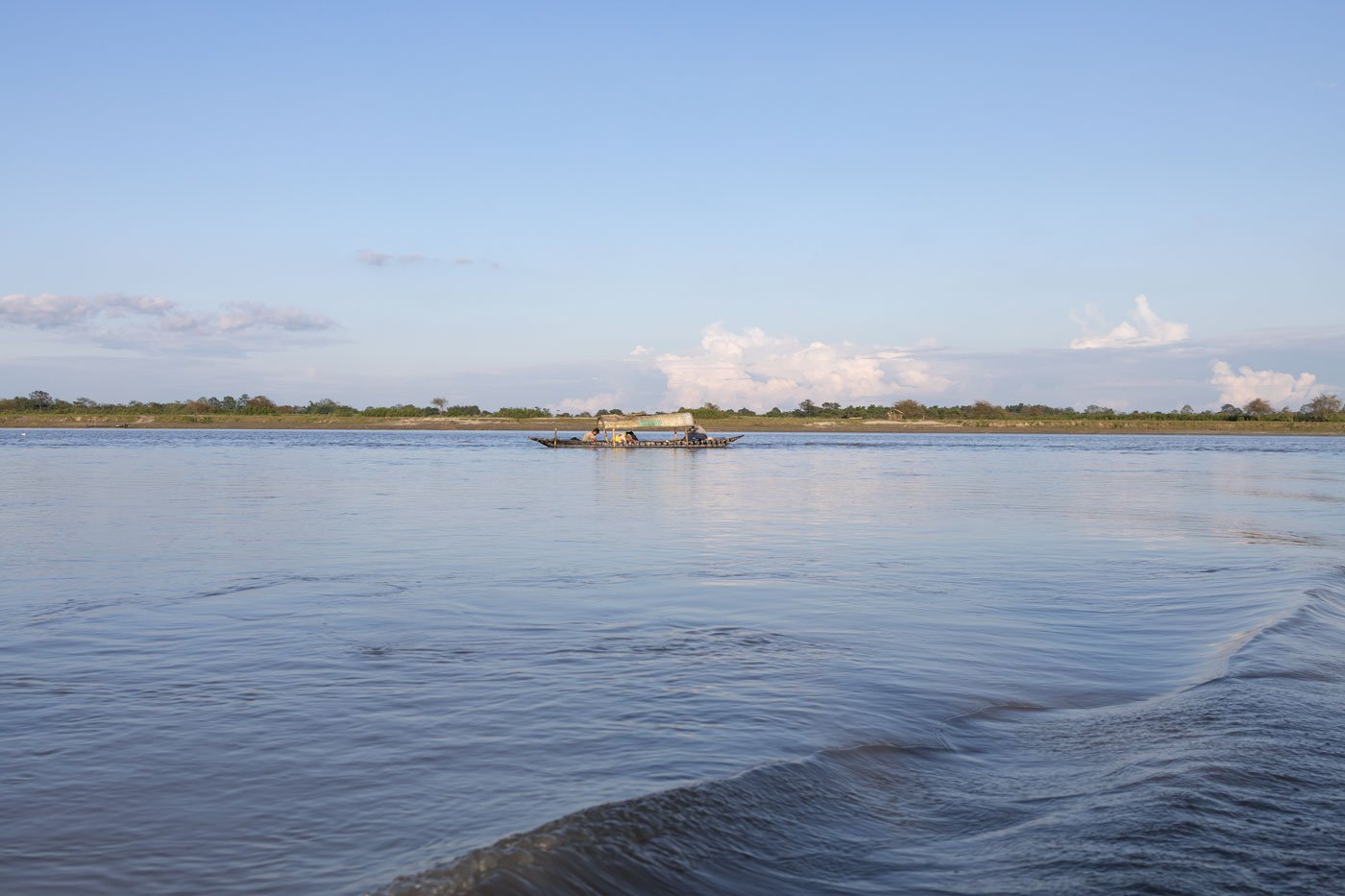
Dabli Chapori, seen in the distance, is one of many river islands – called
chapori
or
char
– on the Brahmaputra
Since their arrival in Assam 90 years ago, the Yadav families have moved four times just to stay afloat on the Brahmaputra. The last time was in 1988, when they moved to Dabli Chapori. The four sandbanks that the Yadav community has lived on are not far from each other – 2-3 kilometres away at most. Their current home gets its name from the word ‘
dabli
’, which locals say means ‘double’, and denotes the comparatively larger size of this sandbank.
All the families on Dabli own land, on which they grow rice, wheat and vegetables. And, following in the footsteps of their ancestors, they also rear cattle. Everyone here speaks Assamese, but amongst themselves and at home the Yadav families speak in Hindi. “Our food habits have not changed,” says Siwjee, “but yes, we do eat more rice than our relatives back in Uttar Pradesh.”
Still absorbed in their new books, Siwjee’s students have not stirred. “I like the Assamese books best,” Rajeev Yadav, all of 11 years, tells us. His parents are farmers and keep cattle. Both left school after Class 7. “I will study more than them,” he says and then starts singing a composition by Assamese music legend Bhupen Hazarika, ‘Asom Amar Rupahi Desh’, his voice getting stronger as his teacher looks on proudly.
*****
Living on shifting sandbanks in the middle of a river that floods every year is not without its challenges. Each home has invested in a rowing boat. There are two motorboats on the island that are used only in an emergency. Water for their daily needs is drawn from hand pumps located near clusters of houses. During floods, drinking water is supplied by the district disaster management department and NGOs. Electricity is generated through the solar panels supplied by the state to each home. The designated ration shop is in Gezera village on the neighbouring Majuli island. It takes them about four hours just to get there – by boat to Disangmukh, a motorboat to Majuli from there, and then to the village inland.
The closest primary health centre is 3-4 hours away, in Ratanpur Miri village on Majuli island. “Medical issues present a problem,” says Siwjee. “If someone falls ill, we can get them to a hospital on the motorboat, but during the monsoon it becomes difficult to navigate on the river.” Ambulance boats do not service Dabli, and the community sometimes uses a tractor to cross the river where water level is low.
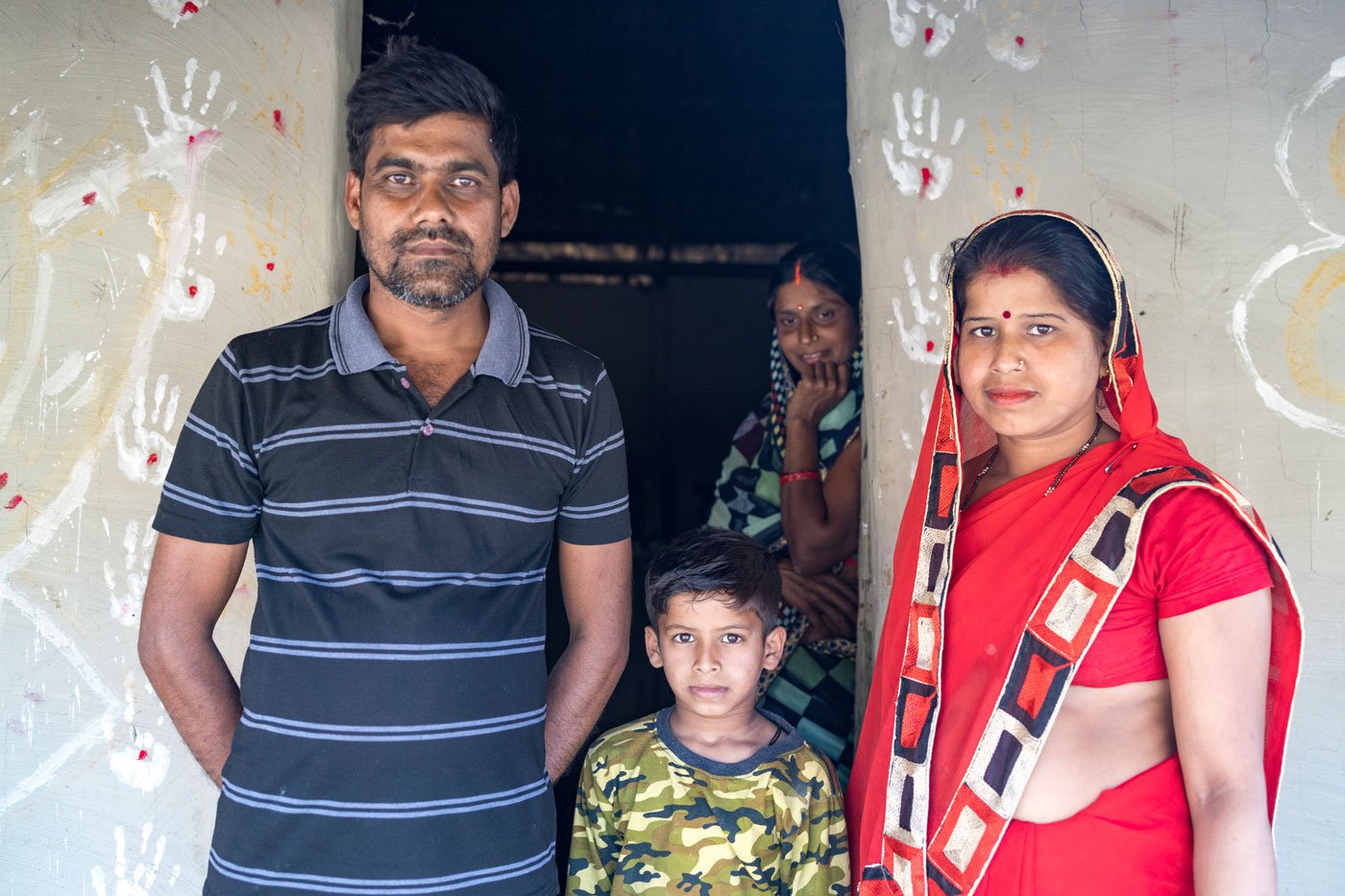
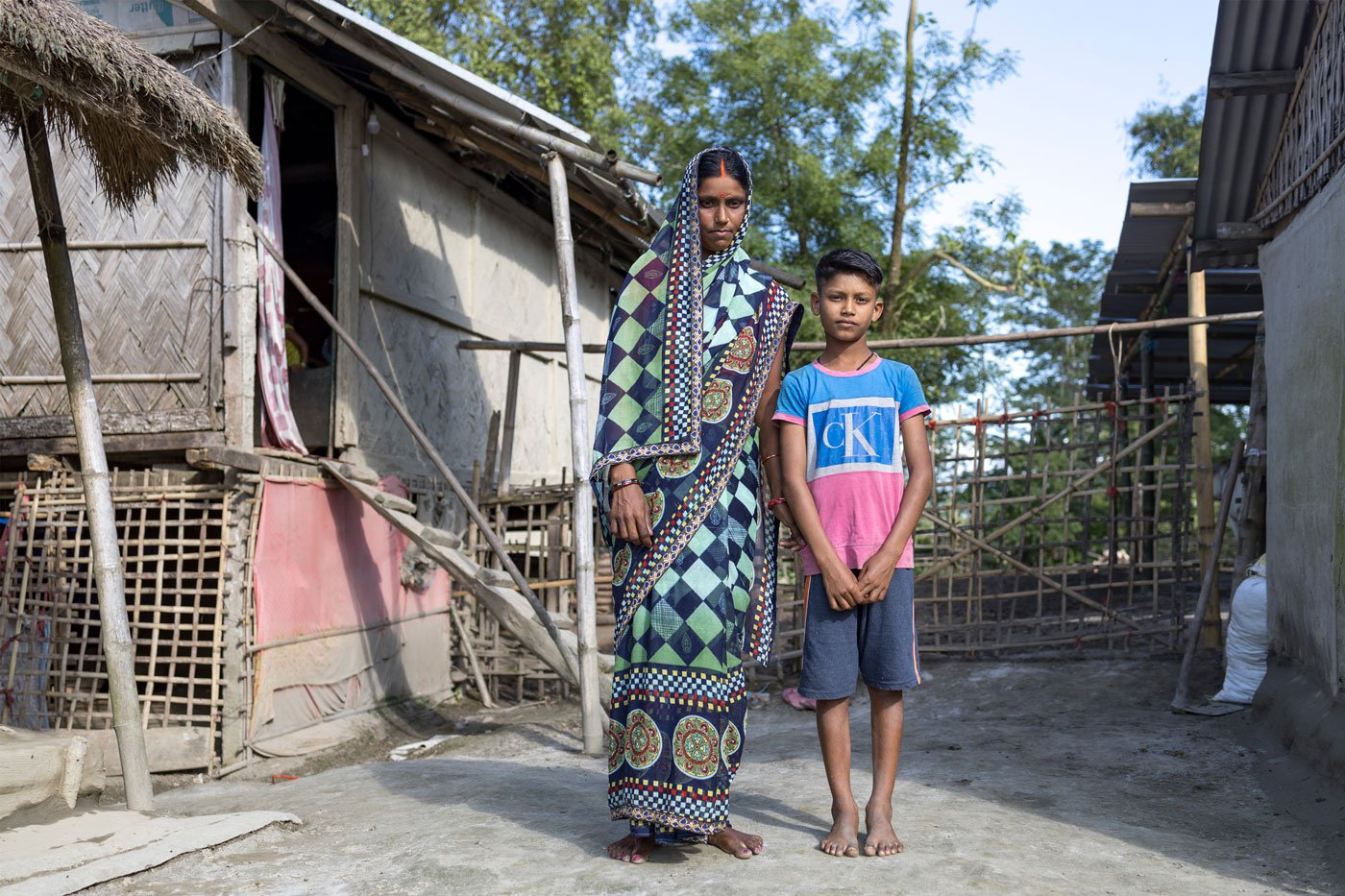
Left: Ranjeet Yadav and his family, outside their home: wife Chinta (right), son Manish, and sister-in-law Parvati (behind). Right: Parvati Yadav with her son Rajeev
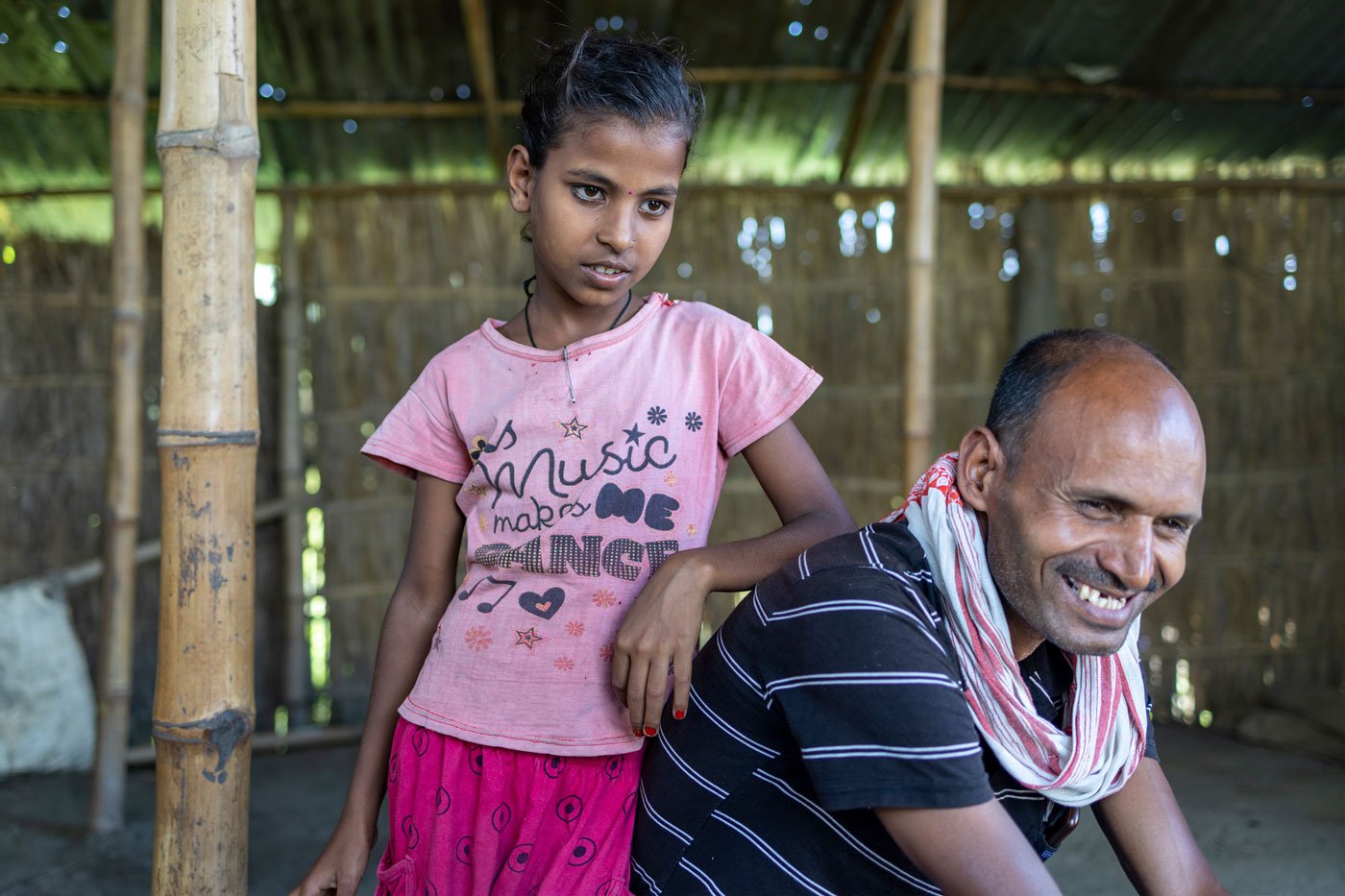
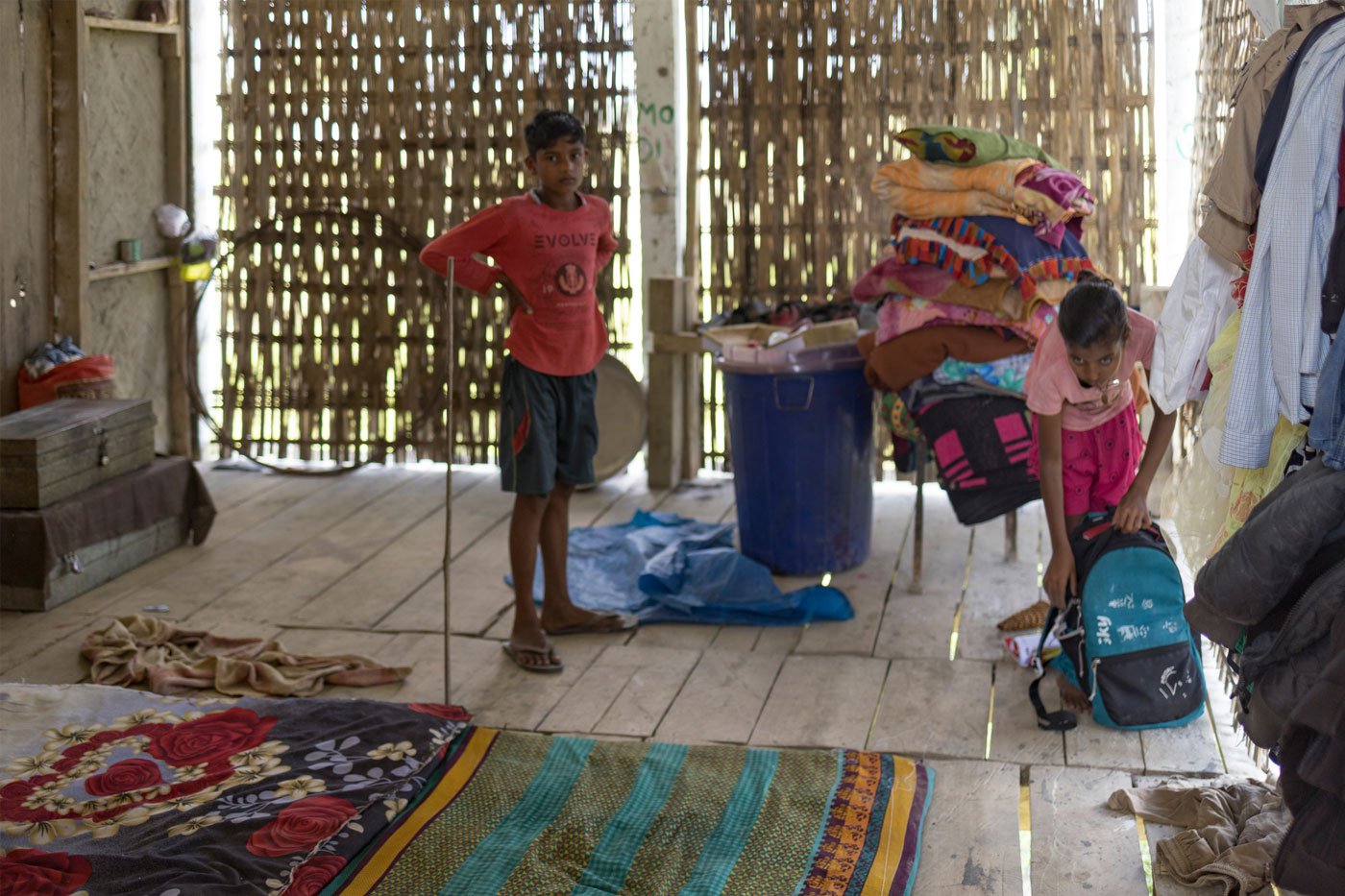
Left: Ramvachan Yadav and his daughter, Puja, inside their house. Right: Puja and her brother, Dipanjay (left)
“We need an upper primary school [up to Class 7] here as small children have to go across the water to the school in Disangmukh when they finish here,” says Siwjee. “It’s fine in the non-flood times, but during the flood season [July to September], school stops for them,” says Siwjee. He deals with a high rate of teacher turnover at his school. “Teachers appointed to this school don’t want to stay. They come only for a few days [and don’t return]. That is why our children lose out in their progress.”
Ramvachan Yadav, 40, a father of three children aged between 4 and 11 years, says, “I will send my children to study [across the river]. They will find work only if they are educated.” Ramvachan cultivates a plot, little over an acre, where he grows bottle gourd, radish, eggplant, chilli and mint, to sell. He also keeps 20 cows and sells their milk. His wife, Kusum, 35, also grew up on the island. She had to drop out after Class 4, she says, as there was no question of a young girl leaving the island in those days to study further.
Ranjeet Yadav sends his six-year-old son to a private school, even if it means crossing the river twice daily . “I take my son on my bike and bring him back. Sometimes my brother who goes to college in Sivasagar [town] takes him along,” he says.
His brother’s wife, Parvati Yadav, who never went to school, is happy that her daughter, 16-year-old Chintamani, is studying in a high school in Disangmukh. It is a two-hour walk to school for her, and she must wade through the river for a part of her journey. “I worry because there can be elephants around,” Parvati says. Next in line to go to school on the mainland, she says, are her children Suman and Rajeev, 12 and 11.

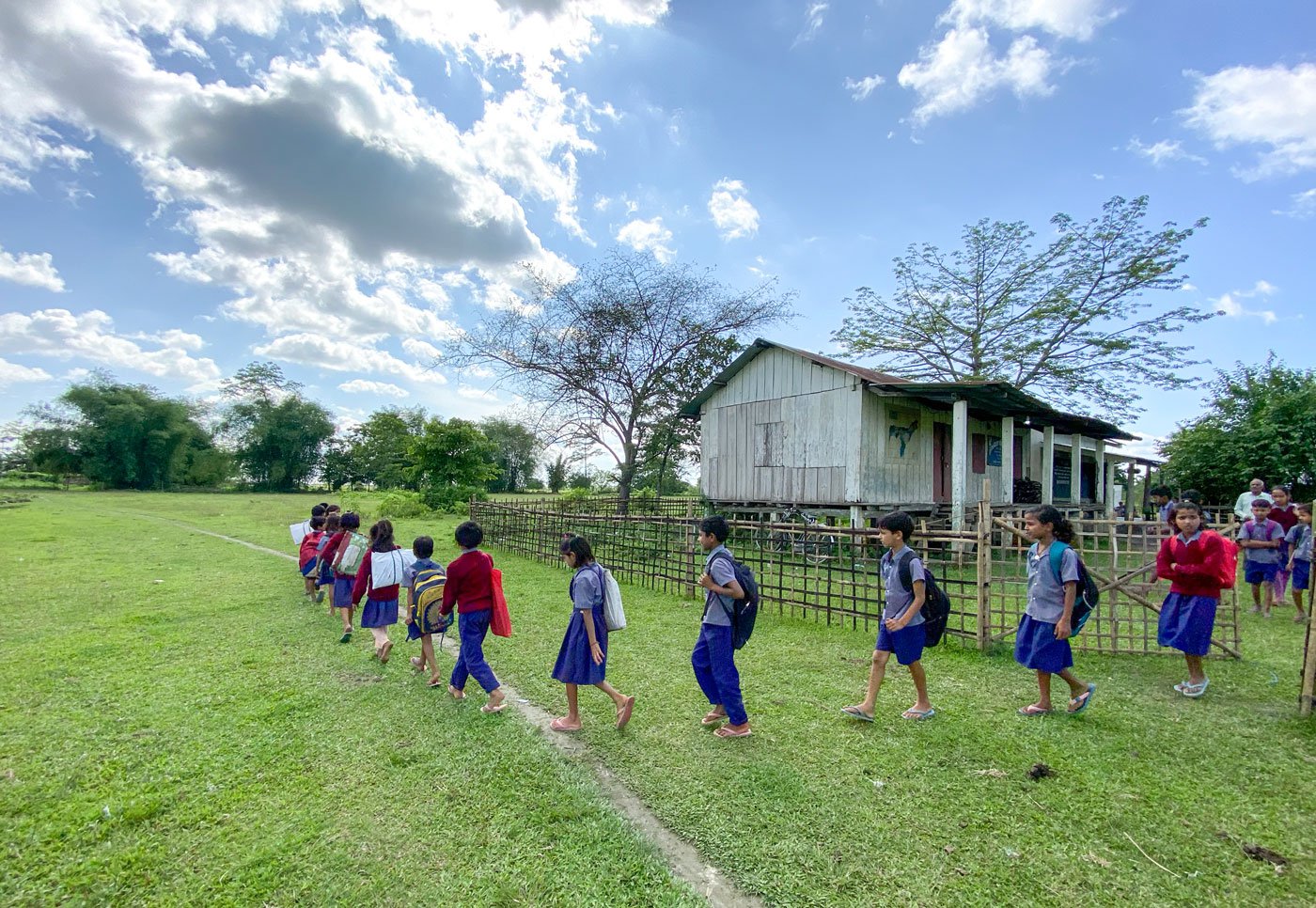
Left: Students lined up in front of the school at the end of day and singing the national anthem. Right: Walking out of the school, towards home
But when the district commissioner recently asked people of Dabli Chapori if they wanted to move to Sivasagar town, no one was willing. “This is our home; we can’t give it up,” says Siwjee.
The headmaster and his wife, Phulmati, are proud of their children’s academic journey. Their elder son is with the Border Security Force; daughters Rita, 26, is a graduate, and Gita, 25, is a postgraduate. The youngest, 23-year-old Rajesh, is studying at Indian Institute of Technology (BHU) in Varanasi.
The school bell has rung and the children line up to sing the national anthem. Yadav then opens the gate and they file past, slowly at first and then breaking into a run. The school day is over and the headmaster needs to tidy and lock up. Stacking the new story books, he says, “Others may earn more, and what I get from teaching may be less. But I can run my family. Most of all, I enjoy this work, the service...My village, my district, they will all progress. Assam will progress.”
The author would like to thank Bipin Dhane and Krishna Kant Pego of Ayang Trust for their help in reporting this story.
